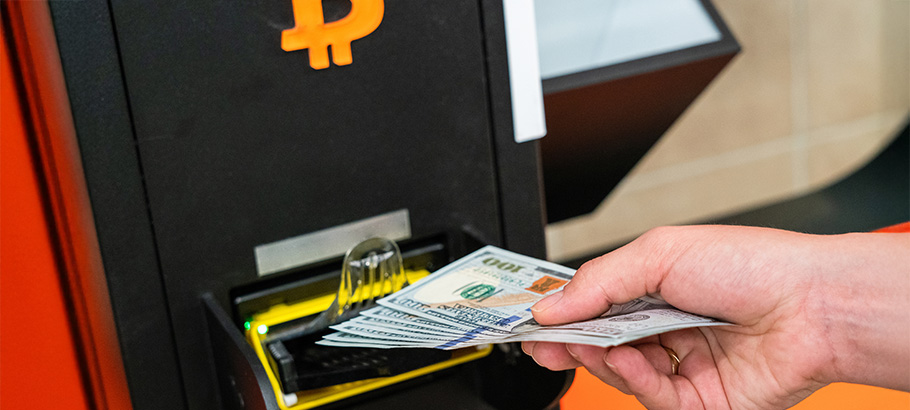The Empowerment Edit
Explore more articles
Budgeting & Spending

Learn how to use the 50/30/20 rule to balance needs, wants, and savings. Discover p...
Budgeting & Spending

Budget smarter! In Part 2 of our Foundations of a Strong Budget series, see how foo...
Fraud & Security

Protect your money from Bitcoin ATM scams. Learn the warning signs, red flags, and h...
Budgeting & Spending

Learn the 5 steps to a strong budget. Separate needs from wants, avoid overspending...
News

Kalsee Credit Union and Next Level Sports Center are coming together in a new partne...
Uncategorized

When job hunting, don’t focus only on the paycheck. Great employers offer more than ...
Budgeting & Spending

The holidays are fun—but they can strain your budget. With a little planning and sma...
Fraud & Security

Fraud is more common—and more costly—than ever. As scams grow more advanced, it's cr...
Investing & Retirement

Bitcoin offers an opportunity for those who understand the risk — and it can be a le...
Budgeting & Spending

A budget is the foundation of financial wellness—it helps you cover needs, reach go...
Saving

Learning a new skill doesn’t just grow your confidence—it can grow your savings too....
Budgeting & Spending

Budgeting doesn’t have to be complicated or restrictive. The 50/30/20 method offers ...
Loans

Deciding between leasing or financing a car isn’t just about monthly payments—it’s a...
Budgeting & Spending

Checks may feel outdated, but they’re far from extinct. This guide explores why chec...
Credit Unions

Choosing where to keep your money matters. While banks operate for profit, credit un...
Youth

Use three jars—Spend, Save, and Give—to manage your money smartly. Spend on fun stuf...
Saving

From family chats to financial blogs, your go-to sources for money advice reflect yo...
Investing & Retirement

Low interest rates may limit returns, but smart investing is still possible. This gu...
Income & Jobs

The best time to write a business plan is anytime you need clarity—whether you're ex...
Youth

People earn money in different ways: a wage (money per hour), a salary (set yearly a...
Saving

Looking for a low-risk way to grow your savings? Certificates of Deposit (CDs) offer...
Investing & Retirement

Small money habits can lead to big retirement gains. This guide shares five practica...
Youth

Every time you make a choice, you give up other options—that’s called opportunity co...
Credit Unions

Being a credit union member means more than just having an account—you’re a part-own...
Fraud & Security

Scammers use urgency, authority, and fake credibility to trigger panic and bypass yo...
Youth

You can keep your money in a piggy bank or a savings account. A piggy bank is easy t...
Income & Jobs

What you wear while working from home can impact your mindset and productivity. Dres...
Youth

People borrow money even though it costs extra (called interest) for three main reas...
Youth

Saving is safe but grows your money slowly. Investing can help it grow faster—but th...
Saving

Inflation quietly eats away at your savings—but you can fight back. This guide shows...
Credit Unions

Credit unions are member-owned, community-focused financial co-operatives built on v...
Income & Jobs

Choosing a career can feel overwhelming, but exploring your options through self-ass...
Investing & Retirement

Wall Street’s iconic Charging Bull wasn’t city-sanctioned—it was guerrilla art. Inst...
Fraud & Security

Identity thieves are after more than just your passwords—they target your trash, pho...
Income & Jobs

Even the best-prepared candidates can feel anxious before interviews—but reframing y...
Fraud & Security

Crypto scams are on the rise, with schemes like phishing, Ponzi setups, fake wallets...
Investing & Retirement

Time is one of the most powerful tools in investing. This guide breaks down how time...
Income & Jobs

If you’ve left a job, deciding whether to roll over your 401(k) or leave it can impa...
Youth

Teaching kids smart money habits early pays off. With Kalsee’s fun financial educati...
Investing & Retirement

Compound interest rewards early savers—but many young adults aren’t taking full adva...
Loans

Quick-cash loans may seem like a lifeline, but they often come with dangerous strin...
Budgeting & Spending

Job loss affects more than just your bank account—it disrupts your routine, identity...
Credit & Debt

Think credit scores are confusing or out of your control? This guide debunks four co...
Budgeting & Spending

Want to save big without changing your shopping list? Switching from name brands to ...
Loans

Buying a used car from a private seller can save you money—but it comes with risks. ...
Budgeting & Spending

Your paycheck withholdings don’t have to be a mystery—or a missed opportunity. This ...
Credit & Debt

A credit score is a three-digit number between 300 and 850 that’s calculated by cred...
Income & Jobs

Choosing a career can feel overwhelming—but you’re not alone. This guide explores wh...
Budgeting & Spending

Financial emergencies can hit hard—but with the right steps, you can regain control....
Credit & Debt

Credit scores may seem mysterious, but they’re built on simple habits. This guide ex...
Loans

Buying a home is more than a financial decision—it’s a personal one. This guide walk...
Budgeting & Spending

You don’t need to spend money to support your community. This guide shares five free...
Budgeting & Spending

Scholarship applications take time—but a smart strategy makes them more efficient an...
Budgeting & Spending

Budgeting isn’t just about numbers—it’s about mindset. This guide shows how using si...
Budgeting & Spending

Budgets work best when they’re realistic, flexible, and focused on awareness—not gui...
Budgeting & Spending

Pets bring joy—but also unexpected costs. This guide highlights three often-overlook...
Budgeting & Spending

Deciding whether to rent or buy a home isn’t one-size-fits-all. This guide breaks do...
Loans

Loans can open doors—but only if they fit your budget and goals. This guide walks yo...
Budgeting & Spending

Every purchase involves a quick but important decision: which card to use. This guid...
Budgeting & Spending

Life is unpredictable—and that’s exactly why an emergency fund is essential. This gu...
Loans

Before taking out a student loan, explore ways to cut college costs upfront. This gu...
Budgeting & Spending

Consumer debt is both widespread and deeply personal—shaped by everything from life ...
Fraud & Security

Not sure what to keep and what to shred? This guide breaks down how long to hang ont...
Budgeting & Spending

Insurance isn’t an investment—it’s protection. This guide helps you rethink how insu...
Budgeting & Spending

Struggling to save consistently? Automating your savings takes willpower out of the ...
Budgeting & Spending

Earning more doesn’t have to mean spending more. This guide helps you recognize and ...
Budgeting & Spending

Living on your own means freedom—and bills. This guide shows how setting a regular “...
Loans

Avoiding credit cards may seem smart, but it can actually limit your financial futur...


